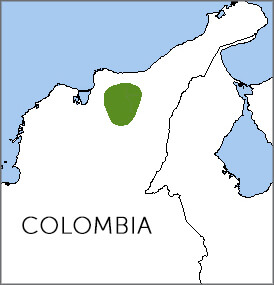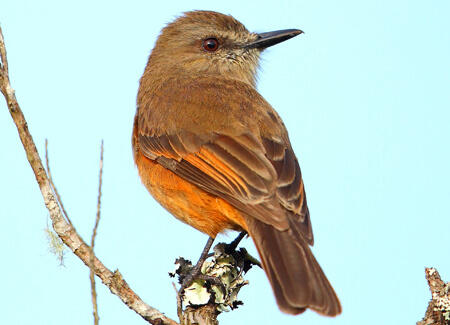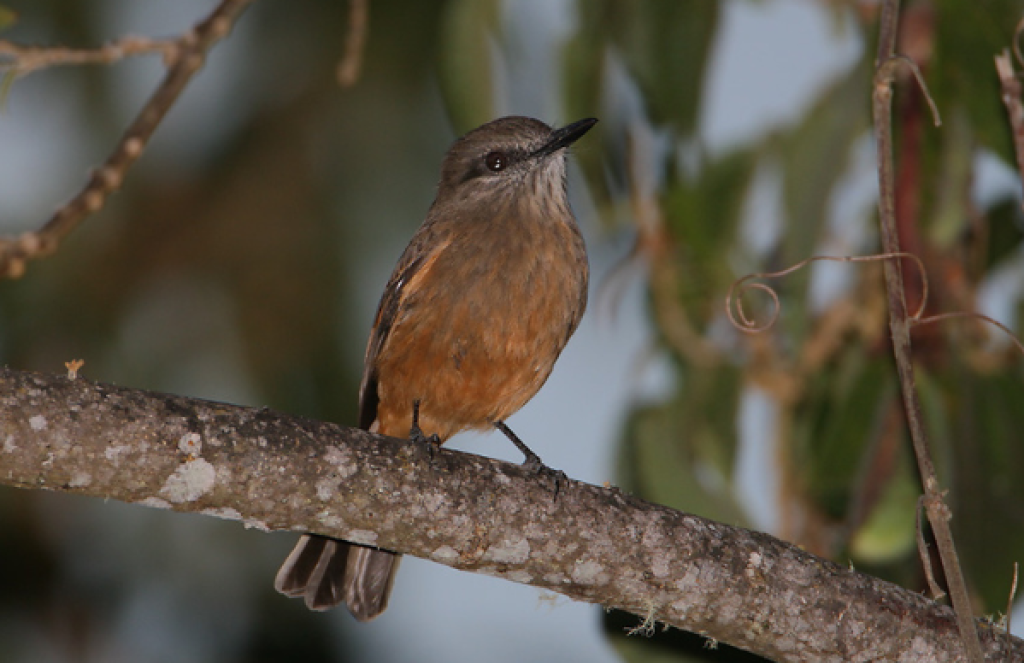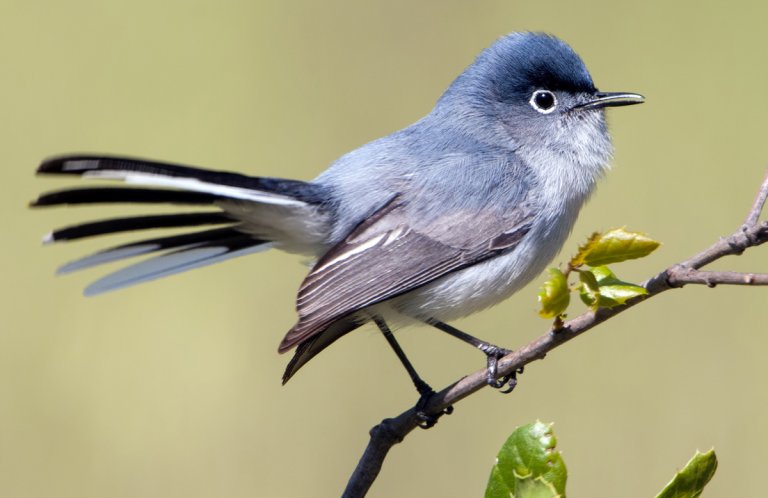 This flycatcher, of the family Tyrannidae along with the Olive-sided Flycatcher and Ochraceous Attila, is found only in northern Colombia, in the Santa Marta Mountain range along the Caribbean coast. It's the tallest mountain range in Colombia and is isolated from the main Andean chains.
This flycatcher, of the family Tyrannidae along with the Olive-sided Flycatcher and Ochraceous Attila, is found only in northern Colombia, in the Santa Marta Mountain range along the Caribbean coast. It's the tallest mountain range in Colombia and is isolated from the main Andean chains.
The isolation of the Santa Marta range has led to the evolution of many endemic species in addition to the bush-tyrant, including the Santa Marta Parakeet. These rare species are threatened by habitat loss: Only 15 percent of the original vegetation in this area remains.
Insect-Hawking Tyrant
The Santa Marta Bush-Tyrant resembles the more widespread Streak-throated Bush-Tyrant but is smaller, with darker brown and cinnamon coloring.
Like other tyrant flycatchers, it can often be found hawking insects from a conspicuous tree or bush-top perch. Its voice is a simple whistle.
Sign up for ABC's eNews to learn how you can help protect birds

Santa Marta Bush-Tyrant by Greg Homel, Natural Elements Productions
At Home with Rare Species
Agricultural expansion, uncontrolled logging and burning of forests, and planting of non-native trees such as pines are among the top drivers of habitat loss.
That's a tragedy for the many rare species of Santa Marta. This area contains the single-highest concentration of endemic birds on Earth, along with high levels of endemic plants, amphibians, and butterflies. It was declared an Alliance for Zero Extinction site in 2005.
Conserving a Paradise
ABC and its Colombian partner Fundación ProAves have conserved important tracts of the Santa Marta Mountains beginning in 2006, when 1,600 acres of key habitat beyond the nearby national park were protected and named the El Dorado Nature Reserve. Additional land acquisitions enlarged the reserve to its current 2,250 acres.
This is a birders' paradise. If you are interested in visiting the reserve, where the Santa Marta Bush-Tyrant is reliably observed by visiting birdwatchers along with over 400 other bird species, see Conservation Birding for more information or book a trip directly.
Donate to support ABC's conservation mission!



















































